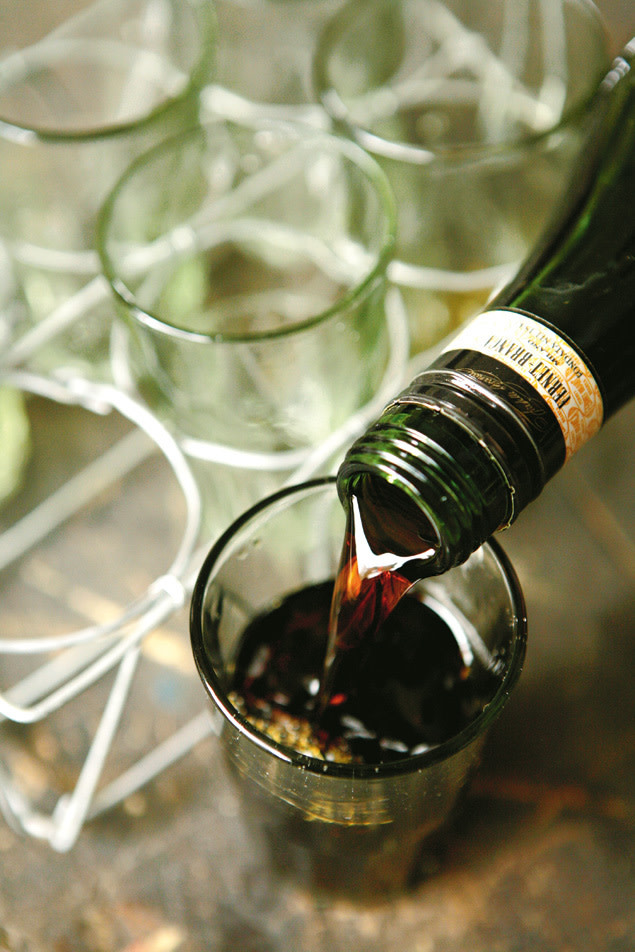The Bitter End

The pungent Italian digestif known as Fernet Branca.
The first time is always unpleasant. Like an introductory sip of coffee or wine, anyone’s initial encounter with the dark-brown, deeply mysterious Italian aperitif known as Fernet Branca promises to be nothing short of foul. One whiff of its bitter aroma singes your nose hairs; and upon actually drinking the stuff, you’ll feel the need to scrape your fingernails along your tongue–just to make sure it’s still there.
As potent as unsweetened cough syrup, this herbal tincture–although possessing hints of licorice and citrus–tastes rather akin to dirt itself. Yet thousands of devotees around the world toss it back regularly with cultish devotion. Some fans equate the experience to slurping a raw oyster for the first time: It’s peculiar, but it’s also undeniably sexy.
That’s how a love affair with Fernet Branca–or, for that matter, just about any herbal digestifs or aperitifs–begins.
Since at least 800 BC, such liqueurs have been concocted with everything from roots and nuts to herbs and spices. Touting salubrious effects ranging from a long, blessed life to a cure for stomach ailments, these curious potions are now standard at bars throughout Portland. If you’re new to the bewildering world of herbal digestifs and aperitifs, this guide will help you sample the examples most commonly found hereabouts.
Pimm’s No. 1
This relatively mild, syrupy, rust-colored aperitif popped up in Great Britain in the 1840s. Subtly spicy and citric–even lollypop-esque–in flavor, it’ll taste best if you splash an ounce or two into a highball glass filled with ice, top it with Sprite or 7Up, and add a cucumber slice and a wedge of lemon for garnish.
Green Chartreuse
A Kermit-the-Frog green, grassy-flavored cordial with hints of cloves and rosemary, Chartreuse derives from an ancient formula that was refined by Carthusian monks in 1605. The recipe of 130 plants and herbs is protected by two brothers–and a vow of silence. Sip it chilled as a digestif.
Campari
Arguably the world’s most popular bitter liqueur, with its unnaturally vibrant red hue and summery orange-peel flavor, Campari was created in 1860 by an Italian café owner. This refreshing aperitif is best consumed with soda or in a negroni cocktail (equal parts gin, Campari and sweet vermouth, shaken and served up with a twist).
Fernet Branca
It’s rumored that only one person knows the recipe to this bitter, mahogany-hued elixir–although it’s commonly held that aloe and rhubarb are included. Some sip it neat chased with ginger ale, or on the rocks with a twist, before or after dinner. Others have been known to enjoy it in their coffee or in a cola.




